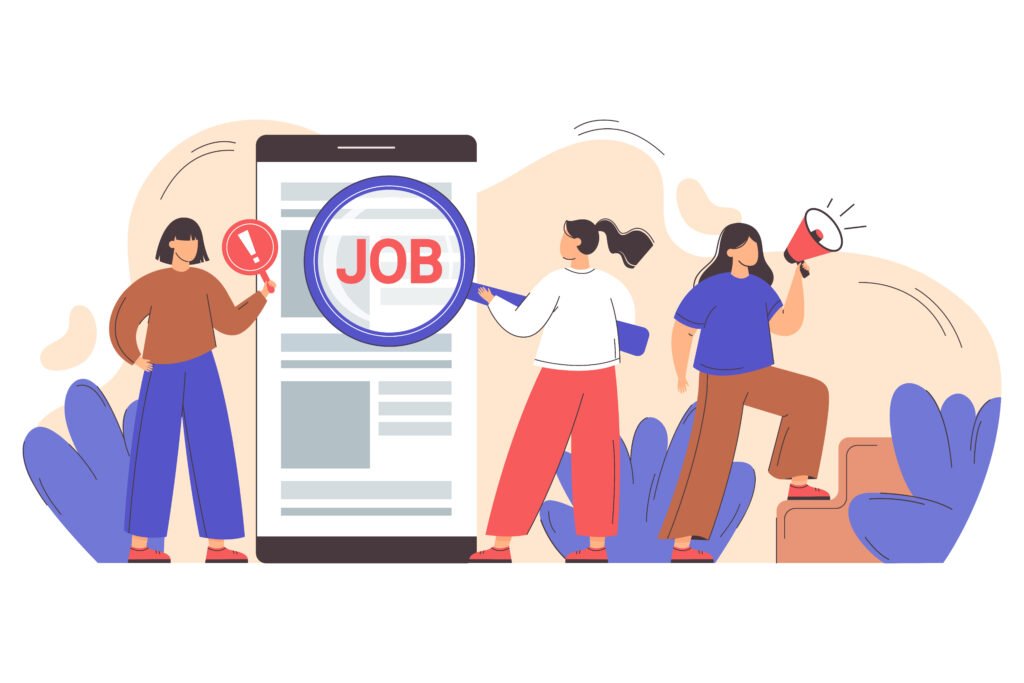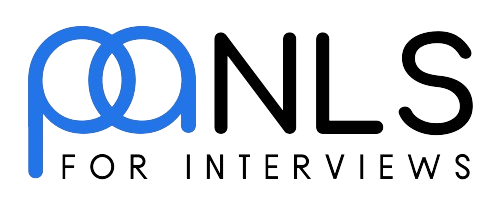Unbiased Hiring in 2025: Strategies and Technologies to Build a Fair Recruitment Process

Bias in hiring remains one of the most hidden and persistent challenges in recruitment. Despite years of progress in diversity and inclusion, many recruitment processes still unintentionally favor certain candidates over others. This leads to a lack of diversity, missed opportunities, and potential losses for organizations striving to build high-performing teams.
Unbiased hiring is a crucial step towards creating teams that are not only diverse but also innovative and effective. It ensures that hiring decisions are based solely on the qualifications and potential of candidates, rather than any personal biases. Recruitment technology for unbiased hiring process plays a pivotal role in transforming this approach, by offering tools that reduce the risk of bias at every stage of recruitment.
This article will explore the importance of unbiased hiring, key strategies for creating a fair recruitment process, and the role of technology in enabling organizations to achieve these goals. By the end, you’ll have a clearer picture of how adopting unbiased hiring practices can help your company build stronger, more diverse teams.
What is Unbiased Hiring?
Unbiased hiring refers to a recruitment process that is free from discrimination, where hiring decisions are based on objective criteria, such as skills, experience, and potential, rather than any unconscious bias toward a candidate’s gender, race, age, or background.
In contrast, biased hiring involves decisions influenced by personal assumptions or stereotypes, often without the decision-maker realizing it. These biases may affect resume screenings, interview outcomes, or even final hiring decisions.
The goal of unbiased hiring is to ensure that all candidates, regardless of their identity or background, have an equal opportunity to succeed based solely on their abilities. This is a key component of Diversity, Equity, and Inclusion (DEI) initiatives, which aim to create more inclusive and equitable workplace environments.
By adopting unbiased hiring practices, organizations create a level playing field for all applicants, which leads to a more diverse, innovative, and productive workforce.
Why It Matters: The Cost of Bias in Recruitment
Bias in hiring doesn’t just harm individual candidates—it has a direct impact on your organization. Numerous studies have shown that biased hiring processes lead to missed opportunities, reduced diversity, and lower innovation.
For instance, data shows that candidates with names that sound ethnic are often 50% less likely to be called for interviews than candidates with more common names, even when both have the same qualifications (Equalture). This leads to a less diverse talent pool, and ultimately, a workforce that lacks different perspectives.
Moreover, organizations with diverse teams have been shown to outperform their competitors by 35% (McKinsey), as diversity fosters innovation and better problem-solving. Companies that fail to prioritize unbiased hiring are likely to miss out on top talent, which directly impacts business performance and growth.
Additionally, biased recruitment processes lead to higher turnover, poor employee morale, and lower productivity. Employees who feel they were hired based on bias or favoritism are less engaged, which can contribute to higher attrition rates and lower overall team performance.
Common Biases in Hiring & Where They Creep In
Biases in hiring don’t always come from ill intent; rather, they are often unconscious and ingrained in how we evaluate candidates. Below are some common biases that can affect recruitment decisions:
- Unconscious Bias: These biases arise when hiring managers make judgments without realizing it. They may favor candidates from similar backgrounds, leading to less diversity and inclusivity.
- Affinity Bias: Hiring managers may unknowingly favor candidates who share similar characteristics or experiences, such as the same alma mater or similar interests, over others.
- Gender and Racial Bias: There are well-documented examples of candidates with ethnic-sounding names being overlooked for interviews, despite having similar qualifications to other candidates. Similarly, gender biases may lead to women being overlooked for leadership roles or male candidates being preferred for technical positions.
- Bias in Interviews: In interviews, interviewers may unintentionally ask different questions to different candidates, or be influenced by a candidate’s personality, appearance, or body language, rather than focusing purely on their qualifications.
To combat these biases, it’s essential to implement strategies and tools that help ensure all candidates are evaluated fairly and objectively.
Recruitment Technology for Unbiased Hiring Process
Advancements in recruitment technology for unbiased hiring process have transformed how organizations can mitigate bias during recruitment. By utilizing these tools, companies can reduce human error and provide a more data-driven, objective approach to evaluating candidates.
- AI-Powered Screening: Artificial Intelligence (AI) helps automate the resume screening process, removing human bias by focusing on skills and qualifications alone, rather than personal characteristics like gender, age, or ethnicity.
- Blind Resume Screening: This technique involves removing names, photos, and other identifying information from resumes before they are reviewed. This ensures that hiring managers focus purely on the qualifications and experience of the candidate, rather than any unconscious bias.
- Structured Interviews: With structured interviews, candidates are asked the same set of questions in the same order, ensuring consistency and fairness. This also allows hiring managers to assess candidates based on predefined criteria, reducing the likelihood of bias influencing the decision-making process.
- AI-Based Video Assessments: Some recruitment platforms use AI to analyze candidates’ video interviews, measuring responses to questions based on established criteria, which further reduces bias by making the process more objective.
- Predictive Analytics: Predictive analytics use historical data to match candidates with roles that suit their skills and potential for success, rather than relying on subjective judgment. This results in more accurate and unbiased decisions.
Using recruitment technology for unbiased hiring process ensures that your organization is making fair, data-driven hiring decisions based on the skills and potential of candidates, not influenced by subjective biases.
11 Proven Strategies for Unbiased Hiring in 2025
Implementing unbiased hiring goes beyond just using technology. Here are 11 proven strategies to ensure your recruitment process remains fair, transparent, and inclusive:
- Conduct a Talent Gap Analysis: Regularly assess the skills your organization needs to stay competitive and ensure you’re hiring for those gaps, not just based on personal preferences.
- Write Inclusive Job Descriptions: Ensure that your job descriptions are free from gendered language and exclusionary phrases. Use clear, concise language that encourages diverse candidates to apply.
- Use Blind Resume Reviews: By removing personal information from resumes, hiring managers can focus on the skills and experience that matter most.
- Leverage Structured Interviews: Structured interviews ensure every candidate is evaluated using the same criteria, minimizing the chances of bias affecting the decision-making process.
- Implement AI-Powered Assessments: Use AI to evaluate candidates’ skills, qualifications, and potential objectively, ensuring all candidates are assessed fairly.
- Attract Passive Candidates with Inclusive Branding: Build a brand that promotes diversity and inclusion, making your company attractive to a wide range of candidates.
- Build Diverse Interview Panels: Having a diverse panel of interviewers can reduce individual biases and ensure that candidates are evaluated from different perspectives.
- Focus on “Culture Add,” Not “Culture Fit”: Instead of seeking candidates who “fit” into your existing team, focus on hiring individuals who can bring new perspectives and enrich the company culture.
- Integrate Continuous Bias Training: Offer regular training to your hiring team on recognizing and addressing unconscious biases to ensure a fairer recruitment process.
- Promote Employee Development: Create opportunities for all employees to grow and develop their skills, regardless of background, and offer mentorship to help them reach their full potential.
- Audit Your Recruitment Metrics Regularly: Regular audits of your recruitment process and metrics help identify areas where bias may still exist and allow you to make necessary adjustments.
The Role of Interview-as-a-Service (IAAS) in Unbiased Hiring
Interview-as-a-Service (IAAS) is revolutionizing the hiring process by offering companies a way to outsource technical interviews. Platforms like Panls.ai provide on-demand, structured, and unbiased technical assessments conducted by a diverse group of expert interviewers.
Key benefits include:
- Diverse Interviewer Pool: A wide range of experienced interviewers ensures that your hiring process is more inclusive and less likely to be influenced by individual biases.
- Structured Assessments: By using standardized evaluation criteria, Panls ensures that all candidates are assessed based on their true skills and potential.
- Speed and Objectivity: With Panls, your recruitment process is streamlined, allowing you to make unbiased, data-driven decisions faster.
- Candidate-Centric Approach: Panls focuses on providing a positive experience for all candidates, ensuring they feel valued and assessed fairly.
By incorporating Interview-as-a-Service, your company can ensure that your recruitment process remains both objective and efficient, helping you hire the best candidates while promoting diversity and inclusion.
Case Example: How Panls Empowers Talent Teams to Hire Fairly and Fast
A rapidly growing tech company struggled to scale its recruitment while maintaining a strong commitment to diversity and inclusion. With long hiring cycles and a lack of diversity in its talent pool, the company turned to Panls for help.
By using Panls’ IAAS for technical interviews, the company was able to reduce its hiring time by 50%. The diverse pool of expert interviewers helped mitigate bias, leading to a more balanced candidate shortlist. As a result, the company increased its diversity by 30% within six months and was able to make hires faster and more effectively.
Try Panls Today
Ready to build a truly unbiased hiring process? With Panls’ Interview-as-a-Service, you can:
- Speed up your hiring process
- Ensure fair and objective candidate assessments
- Scale your technical hiring while promoting diversity
Book a Free Demo Now and experience how unbiased hiring can transform your recruitment process.
Final Thoughts
In 2025 and beyond, unbiased hiring is no longer a luxury—it’s a necessity. The combination of thoughtful strategies and recruitment technology for unbiased hiring process is crucial for organizations looking to stay competitive and attract the best talent. By eliminating bias from your hiring process, you can ensure that your teams are diverse, inclusive, and capable of driving innovation.
As we move toward a future that embraces fairness and equality, the tools and strategies for unbiased hiring will continue to evolve. Companies that act now will reap the benefits of a stronger, more inclusive workforce.
Related Blogs:
Virtual Interview Meaning | Interview Schedule | Interview Format | How To Hire Faster | Technical Assessment | Sources Of Recruitment | What Is Gcc | Technical Recruiter | Interview Rubric .
Frequently Asked Question
Unbiased hiring refers to recruitment practices that are free from discrimination, ensuring all candidates are evaluated based on their qualifications, skills, and potential, without the influence of personal biases.
Unbiased hiring ensures fairness and promotes diversity, leading to stronger teams, greater innovation, and better business performance.
Common biases include unconscious bias, affinity bias, gender bias, racial bias, and bias in interviews.
AI can automate resume screening and interview assessments, ensuring that all candidates are evaluated based on their qualifications and skills, not influenced by personal biases.
Structured interviews standardize the questions asked to each candidate, reducing the likelihood of bias affecting the evaluation process.
IAAS is a service that provides on-demand, expert-led technical interviews that are standardized and unbiased.
Panls offers a diverse pool of interviewers and uses structured, tech-enabled assessments to ensure all candidates are evaluated fairly and objectively.
Yes, unbiased hiring practices ensure that candidates from all backgrounds are considered fairly, leading to more diverse and inclusive teams.
